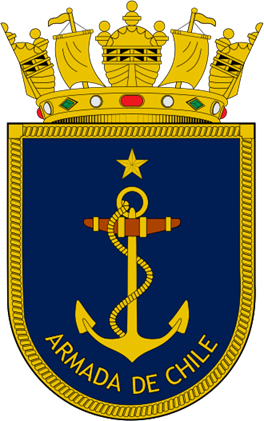
Captain Arturo Prat Navy Station Laboratories

Address
Greenwich Island, South Shetland Islands.Operated by Chilean Navy.
Station manager
Andrés LópezStation name and owner
The Captain Arturo Prat Navy Station is owned by the Chilean Antarctic Program and operated by the Chilean Navy.
Location
The scientific laboratory is located at Arturo Prat station, run by the Chilean Navy, Greenwich Island, South Shetland Islands. Antarctic Specially Protected Area (ASPA) 144, is in the area nearby the station.
Climate data
Grey colours are WMO Climate Normals including maximum and minimum values. Blue colours are individual years.
Climate data for the stations where extracted via Copernicus Climate Data Store, from the global gridded reanalysis product:
ERA5 monthly averaged data on single levels from 1940 to present.
Description and source code: Roemer J.K. 2023. https://doi.org/10.5281/zenodo.10214922
Data Source: Hersbach et al. 2023. Copernicus Climate Change Service (C3S) Climate Data Store (CDS), https://doi.org/10.24381/cds.f17050d7
Biodiversity and natural environment
Geology, glaciology, microbiology and marine biology studies are performed at and in the area near the station.
History and facilities
Arturo Prat station was opened on February 6, 1947 by the First Chilean Antarctic Expedition and it has been established in Iquique Cove, Chile Bay (Discovery Bay), Greenwich Island, South Shetlands Islands. It is named after Captain Arturo Prat, the most important Chilean naval hero. Since its opening, the Chilean Navy has run the Station; the Chilean Antarctic Institute built laboratory facilities and bedrooms for scientists at the site. Four sites at and nearby the station have been designated Historic Sites and Monuments (HSM) 32, 33, 34 and 35, following Chile’s proposals to the Antarctic Treaty Consultative Meetings.
General research and databases
Land and marine biology, microbiology, geology and glaciology studies have been performed at and near the station. Results of the research are published in ISI and WOS refereed magazines and can therefore be searched using appropriate keywords and available searching tools. At earlier times research was published mainly in the Instituto Antártico Chileno’s (INACH) Serie Científica. Station’s research outreach papers have also been published in the INACH Boletín Antártico Chileno and ILAIA magazines.

